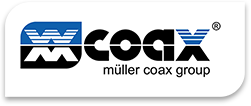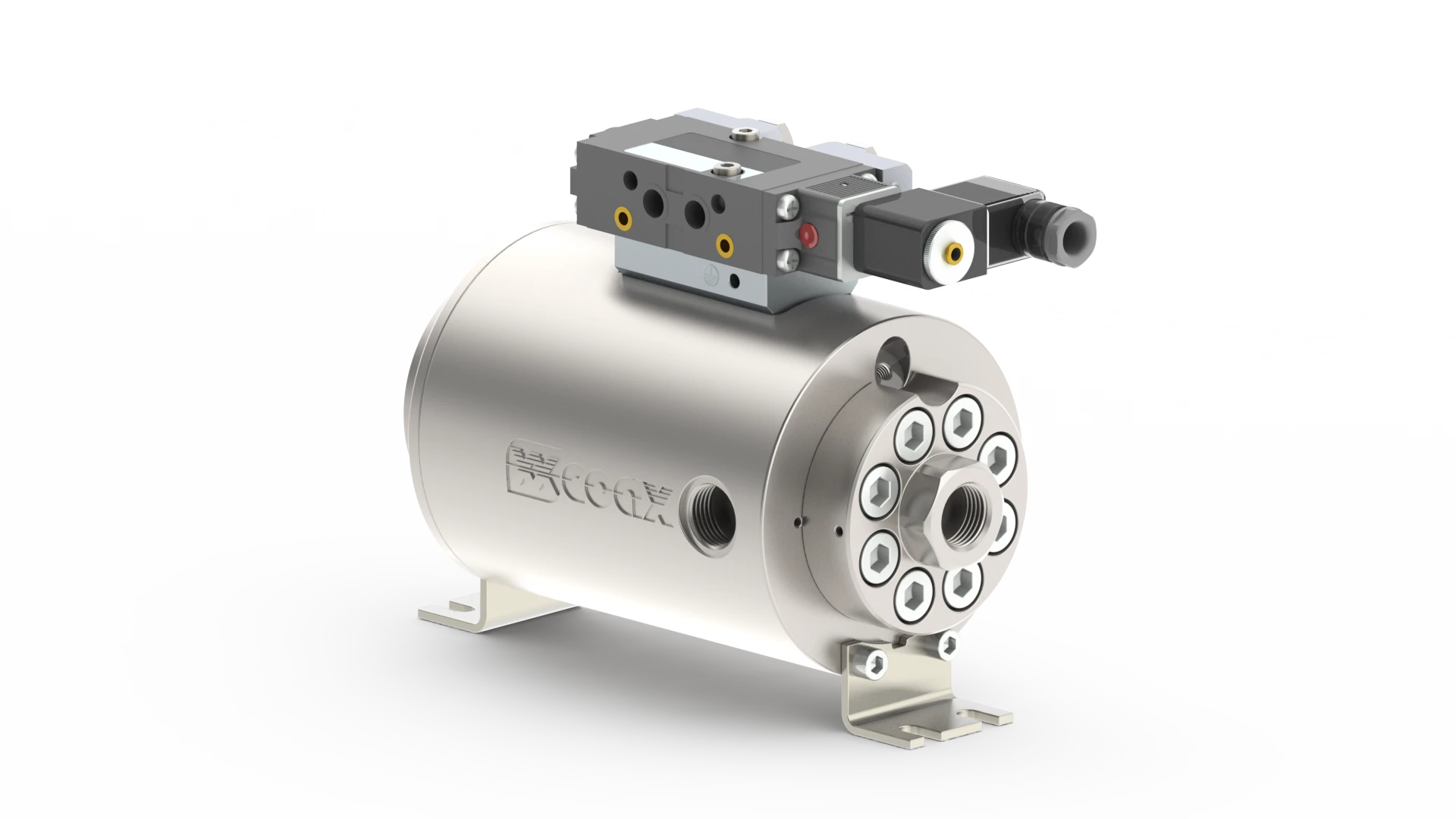

Green hydrogen, which is produced completely CO2 neutral, is essential for achieving the climate targets. The requirements on valve technology in hydrogen applications are considerable: high pressure ratings, higher flow rates, a high degree of tightness, durability, and ease of maintenance, to name just a few. müller co-ax gmbh, a leading manufacturer of coaxial and high-pressure valves, is presenting a hydrogen valve for pressures of up to 1,000 bar and a very high KV value.
coax valves offer an outstanding solution for the production, transportation, and distribution of hydrogen along the entire value chain. As they had to get more efficient in order to establish the existing solutions in the hydrogen industry, a new development was needed. With its new KX 1000 valve, müller coax is one of the pioneers, especially when it comes to handling high pressures and tightness with demanding media such as hydrogen. It is ideal for applications where a high flow rate, tight installation spaces, low weight, and low control air consumption are a particular concern.
Considering the high-pressure rating and flow rate, the KX 1000 is relatively small. The nominal seat width is 8 mm and the KV value is 1.9 m³/h. With an outer diameter of just 114 mm and a length of 205 cm, the valve weighs only 12 kg. The pneumatic drive is coaxially integrated within the valve and consumes only 120 cm³ of compressed air per switching operation. The end user benefits from significantly lower compressed air costs per year.
As a low density medium, hydrogen is compressed in order to be able to fill and transport large quantities. This high-pressure compression is achieved through compressors. The shut-off valves must be of a sufficiently high quality and robustness to prevent leaks. Manufactured from hydrogen-resistant stainless steel, the valve can withstand the most demanding requirements when used with high-pressure hydrogen. The KX 1000 from müller coax can withstand pressures of up to 1,000 bar, as well as back pressure. This means that when closed, the pressure on the outlet side can be higher without any leakage occurring. It can be flushed from both sides at full pressure.
Hydrogen can corrode even solid material. As the smallest of the atoms, hydrogen is capable of diffusing in metals and rendering them brittle. That is why the KX 1000 is made of stainless steel. The high-quality material is resistant to hydrogen and remains leak-proof even after prolonged use.
Hydrogen can be stored and transported efficiently both in gaseous form at high pressure and in liquid form at atmospheric pressure. For the transportation of hydrogen, hydrogen trailers with gas cylinder bundles are used. The gas cylinders are filled under high pressure using a compressor. The KX 1000 high-pressure valve not only withstands pressures of up to 1,000 bar, it also enables a large flow rate with a nominal width of 8 mm. The tanks can thus be filled quickly and easily.
Thanks to the fast-refueling time and significantly greater range compared to all-electric drives, hydrogen is a viable alternative, especially for commercial vehicles and tube trailers that travel long distances. But there is still room for improvement, such as shortening the refueling time through the use of high pressures.
The KX 1000 hydrogen valve from müller co-ax gmbh is designed for two-way flowability. This means that the gas cylinders can be emptied through the same valve through which they were filled. This eliminates the need for additional valves and saves space. Two inductive limit switches monitor the switching position of the valve. The temperature range of the medium is typically -40 °C to +85 °C. The KX 1000 conforms to the hydrogen standard for filling stations in accordance with ISO 19880-3. The valve can be used in ATEX zones 1 and 2 as standard, and can even be used in ATEX zone 0 after prior technical clarification.
“The KX 1000 hydrogen valve is a pressure-balanced, extremely compact valve that fits perfectly into the enclosure, especially in confined application situations such as a filling station,” says Heinz Hirschlein, Product Manager at müller coax. “In the hydrogen sector, the future is all about optimizing existing processes. With hydrogen, higher pressure generally means improved efficiency, as more hydrogen can be transported. The KX1000 valve is designed for pressures up to 1,000 bar and also has a high flow rate. This can significantly shorten the fueling process compared to conventional valves,” he emphasizes.
